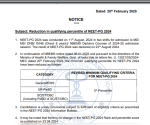CBSE 2025 Class 10 Social Science paper analysis: Expert calls it a well-balanced exam – The Times of India

The CBSE Class 10 Social Science examination took place today between 10:30 am and 1:30 pm, with 24,12,072 students appearing for the test. The board has organized exams across 7,842 centres, all under CCTV surveillance to ensure a fair process. Students responded positively to the exam, finding the paper well-structured and in line with the NCERT syllabus, with questions that were straightforward and anticipated. The paper was segmented into six sections, each aimed at evaluating students’ comprehension, analytical skills, and overall grasp of the subject.
Sonali Malik, Social Science Teacher of Class 10, Ridge Valley School Gurgaon has said that the exam thoroughly covered the syllabus without any unexpected questions, it was well-structured and student-friendly. She mentioned, “The Social Science paper was balanced, fair, and in line with students’ expectations.”
CBSE Social Science exam 2025 section-wise analysis
Ms. Malik provided a detailed section-wise analysis of the exam, highlighting its structure, question distribution, and overall difficulty level.
Section A (Multiple Choice Questions): This section featured a mix of competency-based, critical-thinking, and chronological questions. The MCQs were largely straightforward, making them accessible and boosting students’ confidence.
Section B (Very Short Answer Type Questions): These questions tested students’ conceptual understanding and analytical abilities, requiring clear and precise responses.
Section C (Short Answer Questions): The questions in this section were direct, allowing students to showcase their subject knowledge concisely.
Section D (Long Answer Type Questions): Questions from Geography and Economics were based on real-life scenarios, requiring detailed reasoning and opinion-based responses. The internal choices provided in this section gave students the flexibility to attempt questions they were most comfortable with.
Section E (Case/Source-Based Questions): This section included passages from key chapters such as Sectors in the Indian Economy, Rise of Nationalism in Europe, and Minerals and Energy Resources. The questions tested students’ ability to interpret and analyze sources in context.
Section F (Map-Based Questions): Covering both History and Geography, this section effectively assessed students’ ability to apply knowledge to spatial representation. The questions, framed as statements, encouraged critical thinking and analytical skills in identifying locations on the map of India.
Overall, the Social Science exam maintained a balanced approach, ensuring a fair assessment of students’ knowledge and analytical abilities. With a mix of direct, application-based, and interpretative questions, the paper catered to diverse learning styles. The structured format, along with internal choices, provided students with flexibility, making the exam experience smooth and manageable for most candidates.
















